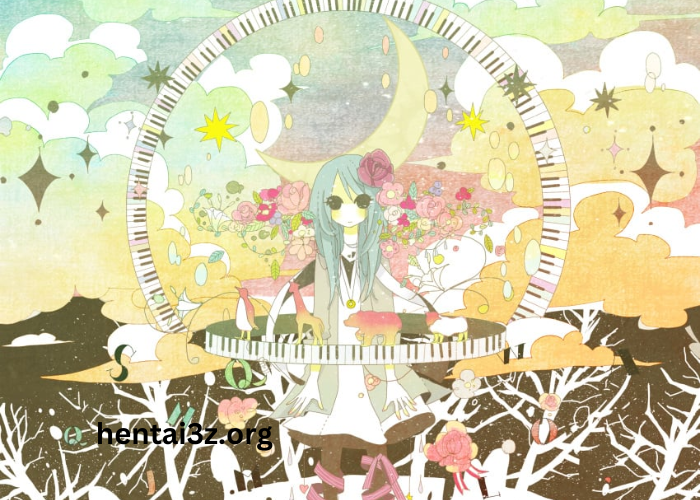The concept of a Mummy has captivated the human imagination for centuries, evoking images of ancient civilizations, elaborate burial practices, and haunting tales. Originating primarily from ancient Egypt, Mummies were created as part of the complex rituals surrounding death and the afterlife. This practice involved preserving the body through embalming and wrapping it in linen, ensuring that the deceased would transition into the afterlife in a recognizable form.
However, the allure of the Mummy extends far beyond Egypt. Various cultures have engaged in similar practices, and the fascination with Mummies has permeated literature, film, and popular culture. In this comprehensive exploration, we will delve into the history, significance, and impact of the Mummy, shedding light on why this subject continues to intrigue us today.
What Is a Mummy and How Are They Created?
A Mummy is a body that has been preserved after death, often through a process of embalming. The most well-known examples come from ancient Egypt, where the process was sophisticated and deeply spiritual. The ancient Egyptians believed in an afterlife, and preserving the body was essential to ensure that the soul could recognize it.
The creation of a Mummy involved several steps. First, the internal organs were removed to prevent decay. These organs were often placed in canopic jars, which were buried alongside the Mummy. Next, the body was treated with natron, a naturally occurring salt that dehydrated the tissues, inhibiting decomposition. Once dried, the body was wrapped in layers of linen, often adorned with amulets and jewelry to protect the deceased in the afterlife. Finally, the Mummy was placed in a coffin or sarcophagus, often elaborately decorated.
While the Egyptian method of mummification is the most famous, other cultures also practiced forms of body preservation. For example, the Inca civilization in South America created Mummies through natural mummification in the cold, dry climate of the Andes.
What Is the Historical Significance of Mummies?
Mummies hold immense historical significance as they provide insight into the beliefs, customs, and daily lives of ancient civilizations. Egyptian Mummies, in particular, reveal much about the society’s understanding of death, spirituality, and the afterlife. They offer a window into the cultural practices surrounding burial and the importance of the physical body in the journey after death.
The study of Mummies has also contributed to our knowledge of ancient medical practices. Examination of preserved bodies has provided valuable information about diseases, health, and diet in historical populations. This research has shed light on the impact of various environmental factors and lifestyle choices on human health over time.
Moreover, Mummies have played a crucial role in archaeological discoveries. They serve as tangible links to the past, helping researchers piece together the histories of ancient civilizations. The excavation of tombs and burial sites has revealed not only Mummies but also artifacts, art, and writings that enrich our understanding of history.
How Have Mummies Influenced Popular Culture?
The Mummy has become a staple in popular culture, captivating audiences through literature, films, and art. The image of the Mummy has evolved over time, from the terrifying, undead creature of early horror films to the more sympathetic and misunderstood characters in modern interpretations.
Classic films like “The Mummy” (1932) and its many remakes have cemented the Mummy‘s place in horror cinema. These films often portray Mummies as vengeful spirits awakened from their eternal slumber, blending themes of horror, adventure, and romance. The Mummy has also made appearances in animated films, television shows, and video games, appealing to audiences of all ages.
Literature has also embraced the Mummy motif. From Bram Stoker’s “The Jewel of Seven Stars” to Anne Rice’s “The Mummy,” writers have explored themes of resurrection, immortality, and the consequences of tampering with the past. These stories often reflect societal fears and fascinations with death and the unknown.
In art, Mummies have been depicted in various styles and forms, showcasing the enduring fascination with these preserved bodies. Artists have used the Mummy as a symbol of mystery, decay, and the passage of time, often reflecting broader themes of mortality and existence.
What Are Some Famous Mummies?
Throughout history, several Mummies have gained notoriety for their preservation, burial practices, or the stories surrounding them. One of the most famous is the Mummy of Tutankhamun, the young pharaoh whose tomb was discovered in 1922 by Howard Carter. The treasures found within the tomb and the Mummy itself have captivated the world, providing invaluable insight into ancient Egyptian culture.
Another well-known Mummy is the Ice Man, discovered in the Alps in 1991. This naturally mummified body, dating back to around 3300 BCE, offers a glimpse into the life of prehistoric humans, revealing information about their diet, clothing, and tools.
The Mummy of Ramses II, one of Egypt’s most powerful pharaohs, is notable for its remarkable preservation. Discovered in the 19th century, this Mummy has provided researchers with information about the health and diet of ancient Egyptian royalty.
These examples highlight the significance of Mummies not only as historical artifacts but also as symbols of our connection to the past.
What Is the Science Behind Mummification?
The process of mummification is a fascinating intersection of art and science. Modern technology has allowed researchers to study Mummies in greater detail than ever before. Non-invasive techniques such as CT scans and DNA analysis have provided insights into the mummification process and the lives of the individuals involved.
For instance, CT scans have revealed the presence of previously unknown artifacts within the wrappings of Mummies, offering new avenues for research. DNA analysis has also shed light on the genetic makeup of ancient populations, allowing scientists to trace lineage and understand migration patterns.
Additionally, studying the chemical composition of embalming materials used in mummification has provided insights into ancient Egyptian practices. Researchers have identified various substances used in the embalming process, such as resins and oils, which not only served to preserve the body but also held spiritual significance.
This scientific approach to studying Mummies has opened up new avenues for understanding ancient cultures and their practices.
How Do Mummies Reflect Beliefs About Death and the Afterlife?
The existence of Mummies is deeply intertwined with cultural beliefs about death and the afterlife. In ancient Egyptian culture, the Mummy was seen as a vessel for the soul’s journey after death. The preservation of the body was essential for ensuring that the deceased could recognize themselves in the afterlife and receive sustenance in the form of offerings.
The elaborate burial rituals associated with Mummies reflect the importance of the afterlife in ancient Egyptian belief systems. Tombs were adorned with inscriptions, paintings, and items meant to accompany the deceased into the next world. These practices highlight the Egyptians’ views on immortality, divine judgment, and the importance of living a virtuous life.
In other cultures, similar beliefs about death and the afterlife can be observed. The Inca civilization, for example, mummified their rulers to ensure their continued presence and influence in the afterlife. This practice underscores the universal human desire to understand and navigate the mysteries of death and what lies beyond.
What Role Do Mummies Play in Modern Archaeology?
In contemporary archaeology, Mummies continue to play a significant role in research and discovery. Excavations of ancient burial sites often yield Mummies alongside artifacts that provide context for understanding historical cultures. These findings can reshape our understanding of social structures, beliefs, and practices in ancient societies.
Moreover, the study of Mummies has contributed to the development of conservation techniques used in preserving artifacts and human remains. Researchers have developed methods to analyze and stabilize Mummies, ensuring that they can be studied and appreciated for generations to come.
Public interest in Mummies has also driven the growth of museums and exhibitions dedicated to ancient civilizations. These institutions aim to educate the public about the significance of Mummies and their cultural contexts, fostering appreciation for our shared human heritage.
Conclusion
The Mummy stands as a powerful symbol of our fascination with death, preservation, and the mysteries of the afterlife. From its origins in ancient Egypt to its enduring presence in popular culture, the Mummy captures our imagination and invites us to explore the complexities of human existence.
Through the lens of history, science, and culture, we can appreciate the multifaceted nature of the Mummy and the insights it offers into our collective past. As we continue to unravel the mysteries of the Mummy, we are reminded of the profound connection between life and death, and the enduring quest for understanding what lies beyond.




